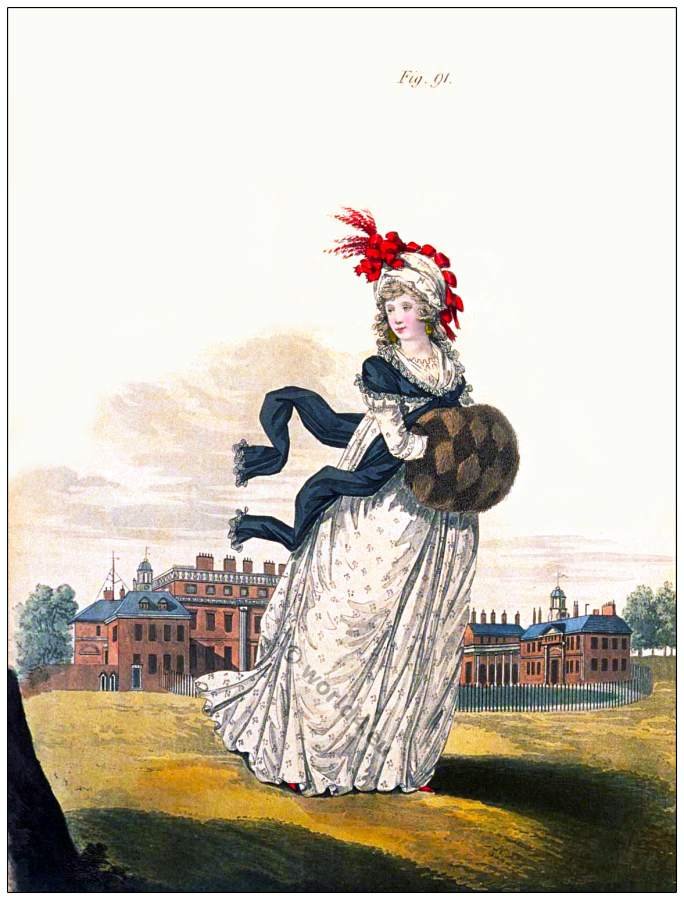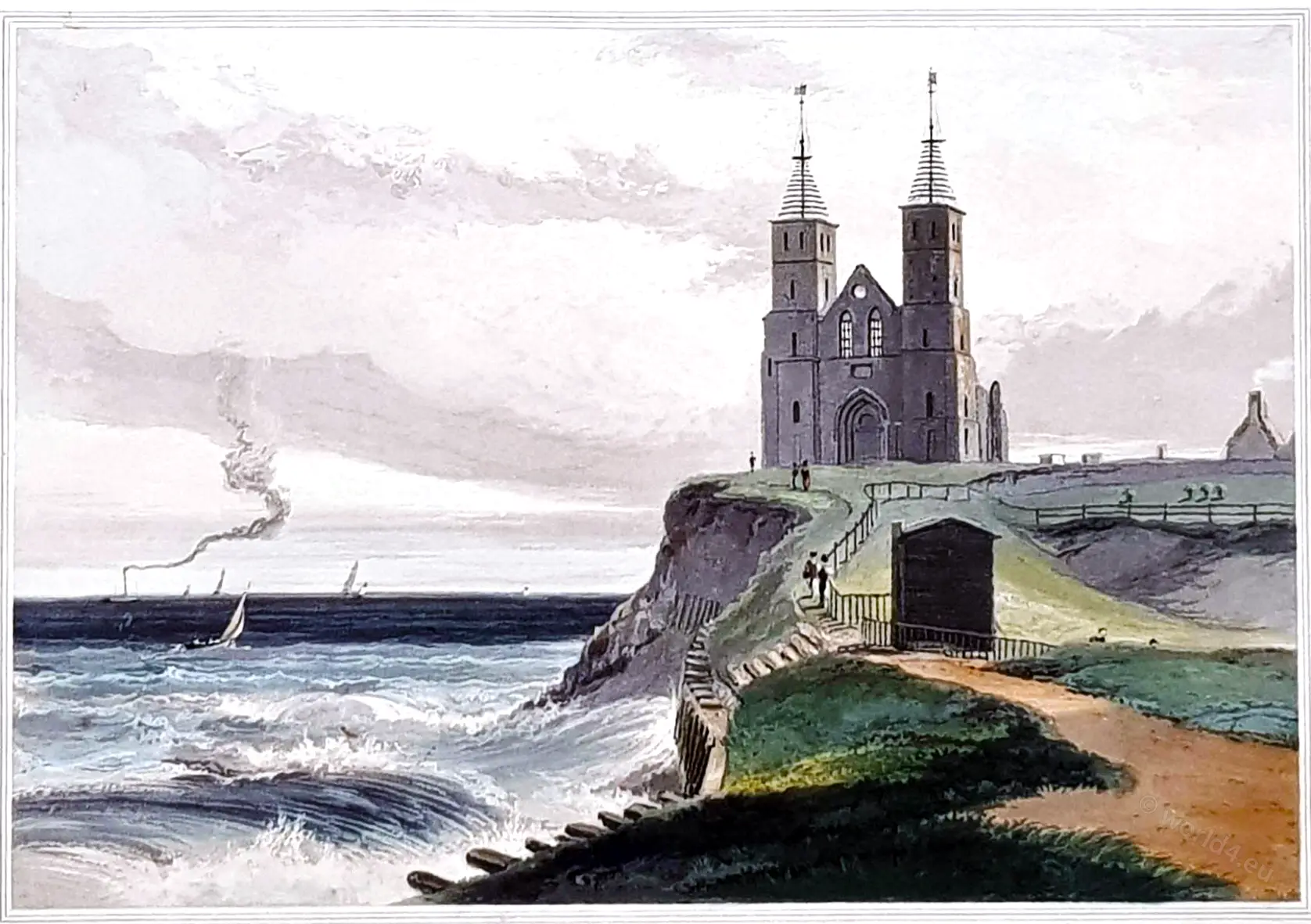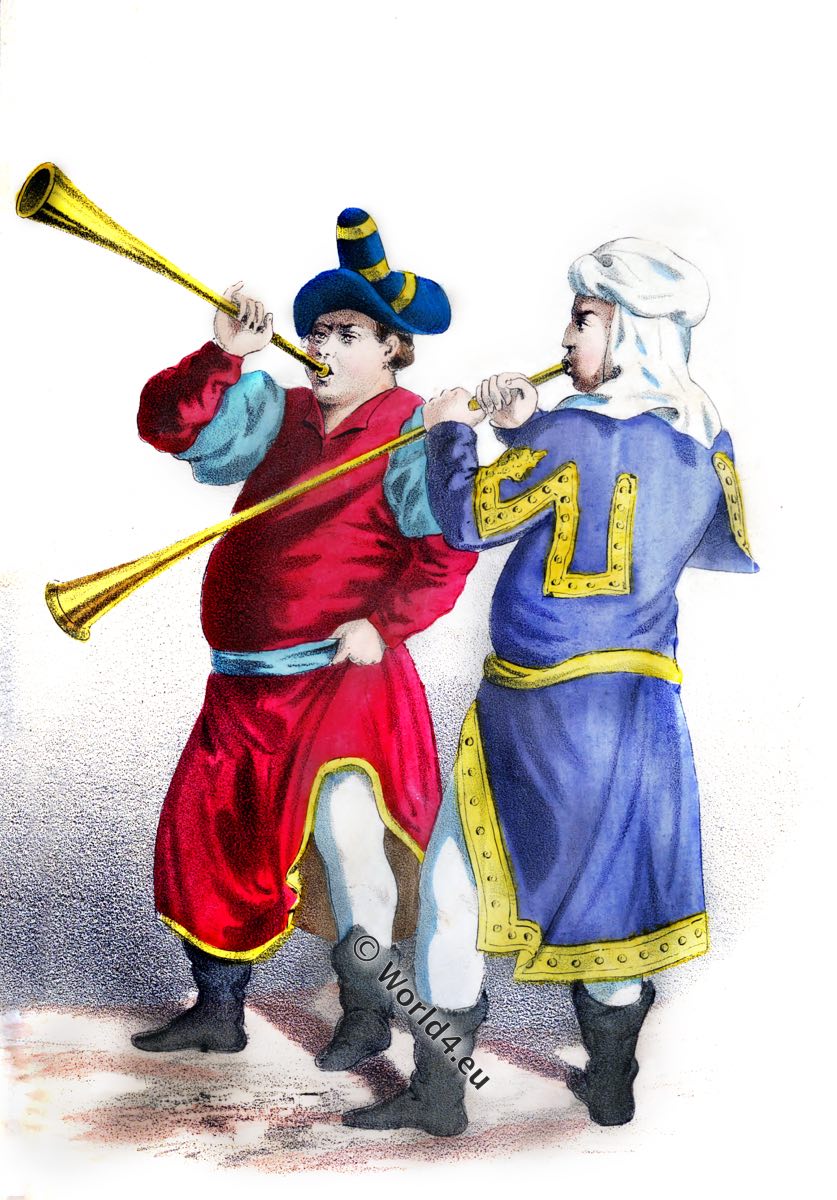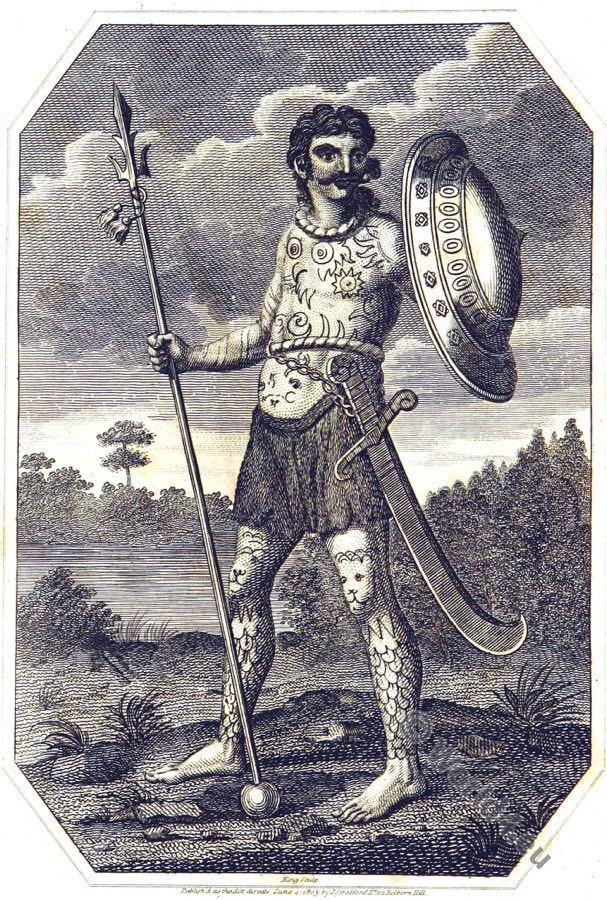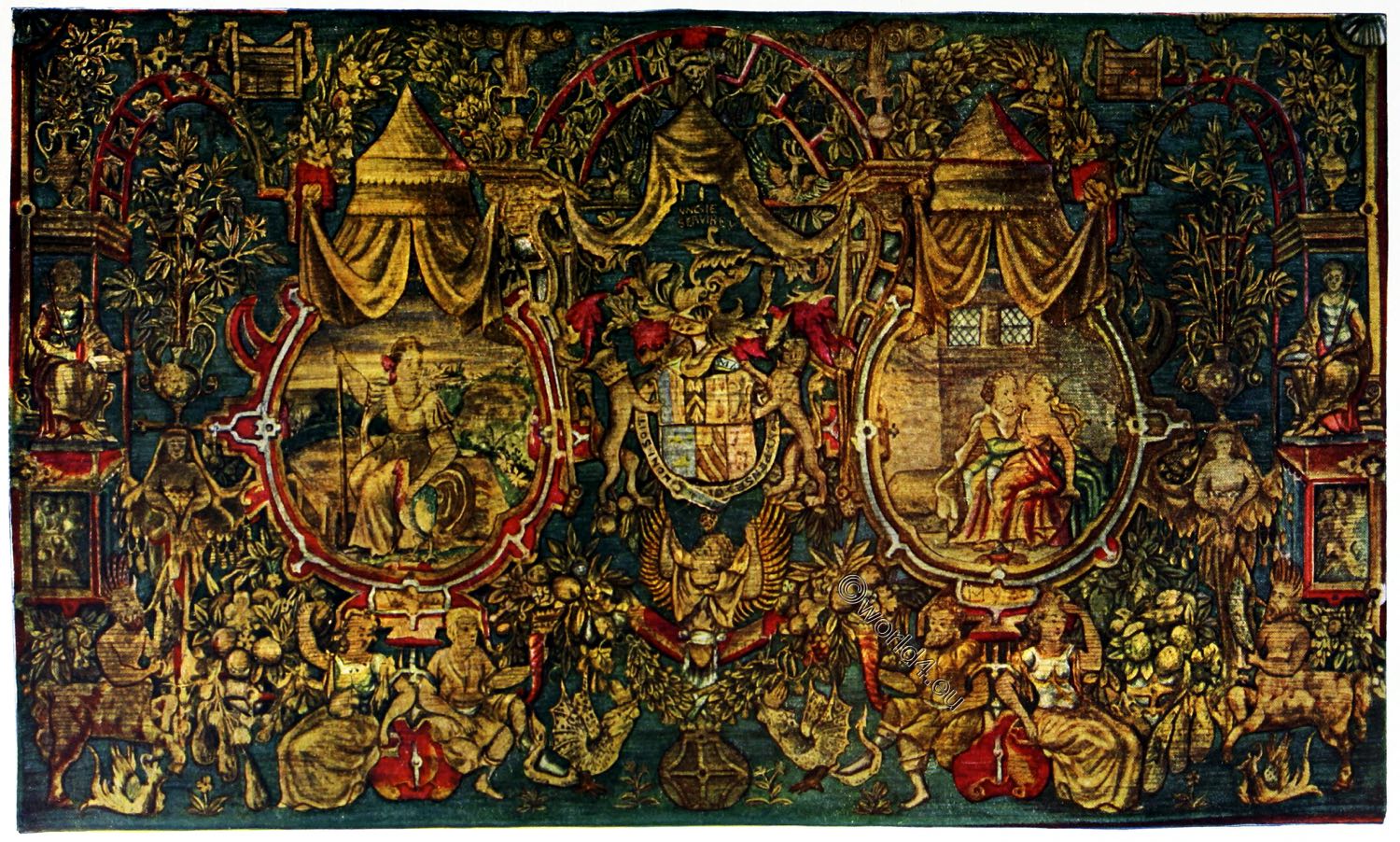SHIPPING AT THE TIME OF THE CONQUEST. ANNO 1066
by Charles Hamilton Smith.
The Norman nation manifested an early taste for the sea. Already, before the conquest of England, the Ocean and Mediterranean had witnessed its daring valour in naval enterprise.
The last of the migratory tribes from the north, it was also the last to retain its courage and pristine institutions. War and rapine are the resources of a people contemning agriculture and regardless of traffic.
Hence, ambition, avarice and want, by turns led the armies or guided the fleets of the Normans. In this manner they established their power in Sicily and Naples, in spite of the jealous strength of the Emperors of the East, and the no less jealous ambition of the Popes.
In this manner also they were settled in the west of Gaul, although hemmed in by the warlike Franks, and faced by the sea covered with Saxons and Danes.
While these two latter nations were mutually exhausting their strength in a lasting contest for the empire of Britain, the Normans, deriving little profit from war with their neighbours by land, turned their attention to the sea; not indeed as a new element, on which they were anxious to display their enterprise, but as a theatre formerly deserted, in order to be soon reoccupied by greater and more striking scenes.
The questionable succession of Edward the Confessor, had no sooner terminated in the hasty assumption of his Crown by Harold, then William of Normandy determined to assert his pretensions by force of arms. Accordingly, in less than six months he collected a fleet of eight hundred and ninety-six, or as the Roman du Rou, cited by Lancelot, affirms, with greater probability, of six hundred and ninety-six vessels: with this fleet, after some delays he crossed the Channel, and landing near Pevensey an army computed at sixty thousand men, gained in a few days the battle of Hastings, and soon after subdued the whole kingdom.
Reflecting on the short space of time allowed for the preparations, and the magnitude of the force assembled for this great undertaking, we cannot refuse our wonder at the resources of the Norman dominions, and admiration of the energy of the government. Allowing these vessels on an average to have carried about an hundred men, the number of builders to construct, and of mariners and rowers to navigate them (even with the admission that many ships and crews were hired), must have been very great.
The subject of the plate before us is taken from the celebrated tapestry *) of Beaux, certainly executed soon after the Conquest. It represents, in a series of rude delineations divided into compartments, all the circumstances of that memorable event. The naval compartments are, the landing of Harold on an embassy to the Duke of Normandy; the building of the invader’s fleet; its sailing, and arrival.
*) The author hopes soon to gratify the public with an exact copy half the size of the original, of this most curious piece of antiquity. It was taken from Beaux, on the landing of the emigrants in Quiberon Bay, and conveyed to Paris, where it now remains.
Out of this latter compartment we have selected the Commander’s ship, and a horse transport: the other vessel in the distance is taken from an anterior part of the same subject—the departure of Harold for France.
Ship-building had in the eleventh century acquired some improvements; there were, at least in the Mediterranean,ships of war with three masts, termed Buccae.
Garricks or hulks were vessels of burthen, by the Latin authors named naves onerariae. Galleys and galleons were of different sorts and dimensions; the former were managed solely by oars; the latter had both oars and a mast and sail: these often carried sixty men in armour, with one hundred and four rowers, besides sailors.
Of this class no doubt was the celebrated galley presented by Earl Godwin to Hardi Canute; and the vessel in the centre of the plate is most probably meant to delineate one of the same order.
The construction of her hull is considerably curved at the keel, with the stem and stern much elevated; something like modern gondolas, or like Norway fishing-boats: although no indication of oars is to he found, we have no doubt of her capacity to row as well as sail.
The rudder is not fixed to the stern-post, but on the quarter, in the manner of the Roman ships, and is paddle-formed, fastened about half way by a chain and bolt. *) She has but one mast, surmounted by a cross, under which is to be seen the great lantern to conduct the fleet by night, or perhaps a kind of round top for the pilot or sailing captain: the mast is sustained by three pair of stays or ropes, one to the stem, another to the stern, and two to each side.
*) The decayed state of the original gives no distinct appearance of this bolt and chain; it is however visible in others. The anchor on the bow also has been borrowed from another.
The large square sail is embroidered, and painted near the yard, and most likely altogether of some lively colour, so as to be distinguished at a distance.
This sail constantly remained aloft, and when required to be furled, men climbed the mast for that purpose. The steersman holds the helm, and a superior officer sits in the bow.
The shields around the gunwale denote her to be equipped for immediate fighting. They are ornamented with various crosses and devices, which, although they are not on the originals, are nevertheless copied from other shields in the same tapestry, and are merely exhibited to show that the Norman shields in those days were already embellished with crosses, monsters, and other symbols.
Source: Selections of the ancient costume of Great Britain and Ireland from the seventh to the sixteenth century, by Charles Hamilton Smith. London: Colnaghi, 1814.

Continuing


